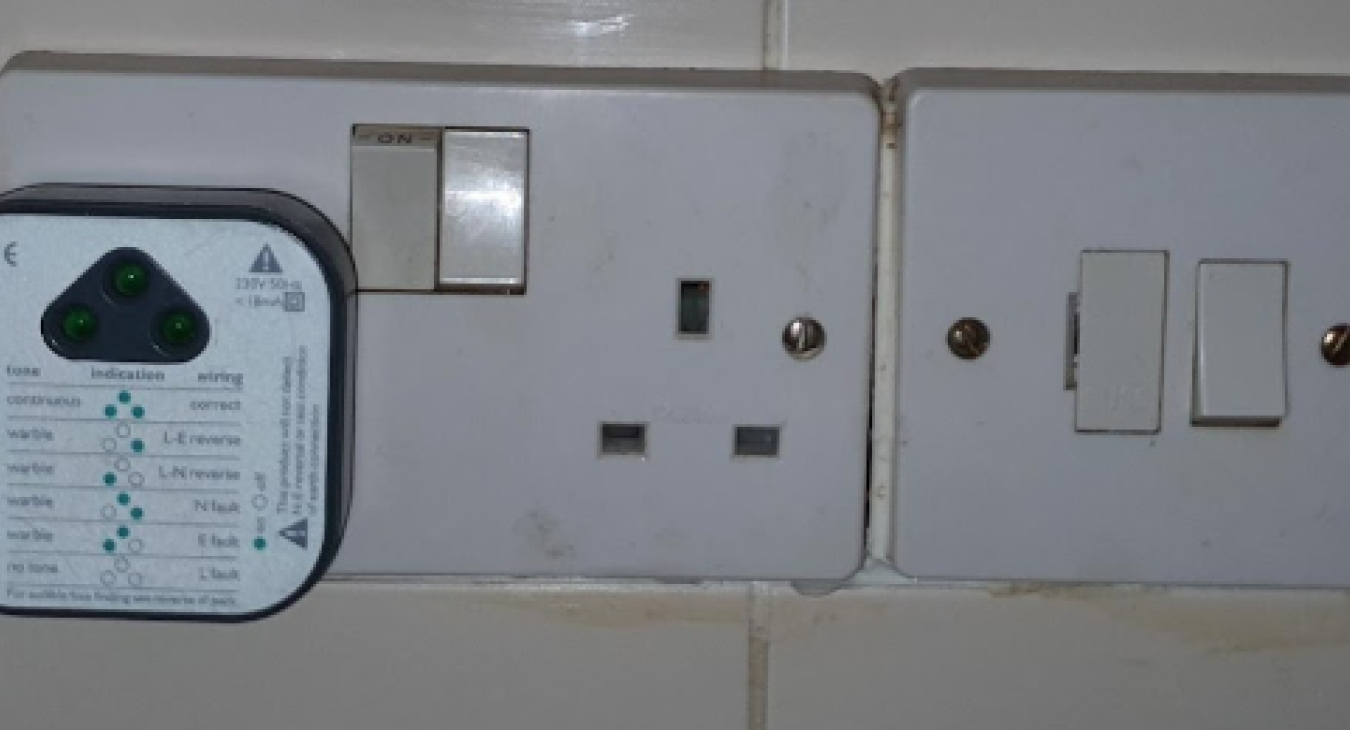Our home’s electrical system is a generally silent system that works away in the background, taken for granted and rarely maintained. We seldom experience problems with the fuse box, an electrical outlet, or other parts of the electrical installation. When problems occur, it can cause worry, confusion and concern that there may be danger present.
Let’s look at the most common reasons that you may experience NO SOCKETS WORKING and go through some self-checks before an electrician needs to be called.
Back to top1) Common Causes of Socket Failure
There can be a great variety of electrical issues that can cause the property to experience total plug socket failure but the 10 most common causes include:
- Circuit Breaker Tripped
- Fuse Blown
- Melted Plug Socket
- Burnt Plug Socket
- Loose Socket Wiring or Loose Plug Socket
- Damaged Plug Socket
- RCD or GFCI tripped
- Faulty Plug Socket
- Cable Damage Somewhere
- Circuit Breaker Faulty
2) Circuit Breaker Tripped
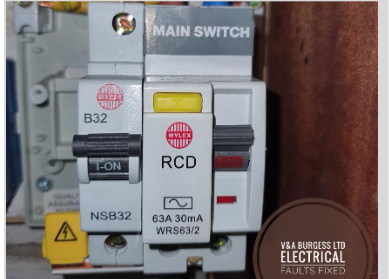
The first thing on our list to check for a tripped circuit breaker.
If a circuit breaker has tripped then there is normally a reason for this occurrence. Circuit breakers rarely trip off for no good reason (see number 10). The circuit breaker in the photograph is the trip switch to the left of the RCD / GFCI device. A circuit breaker for the sockets is usually a 32-amp device like the photograph but can also be 20 amps or 16 amps.
Circuit Breakers will detect certain faults in the electrics and trip when required. A short circuit or sufficiently serious Line to Earth (Ground) fault will result in the circuit breaker for that circuit tripping.
A Circuit Breaker will also trip when there is a prolonged overload. An overload is a situation where there are too many electrical appliances being used pulling too much electrical current through the circuit.
If a circuit breaker has tripped to the off position (facing downwards), try unplugging all the appliances and resetting the switch. If it won’t reset or trips again in a short time period then it’s a good idea to call a professional electrician. Without investigation, it is likely that cable damage, electrical system damage, fire or electric shock could occur.
Back to top3) Fuse Blown
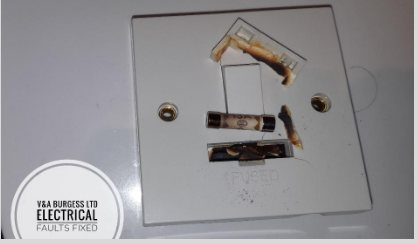
A fuse is a type of electrical overload protection device. Often cylindrical in shape, they contain a piece of thin wire that is designed to blow, creating an open circuit, when there is a large fault current or gradually melt when there is an overloaded circuit from excess appliance use.
When a fuse blows there is a pop as the electrical current blows the wire and the energy is released as heat and sound. In the case of the fuse in the picture, there had been a prolonged overload which caused the fuse to heat up significantly and burn the surround of its fuse carrier before it finally popped.
Check for any switch fuses near to the plug sockets and if you have an old fuse box, turn the power off and check each of the fuses with a continuity tester. A continuity tester will beep if the fuse is good and not give any indication if there is a blown fuse.
If your old fuse box contains fuse wire then check each piece of wire has not blown.
NEVER put the incorrect fuse wire or fuse back in place where an old one blew, doing so is risking electrical fire. If a fuse keeps blowing then a qualified electrician is the best person to investigate the reasons why.
Back to top4) Melted Plug Socket
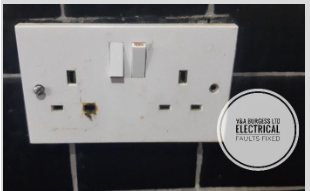
If you have NO SOCKETS WORKING then it could be as a result of a melted plug socket. We can see here that there is some blackening on the front of the plug socket face. At the rear of the plug, there was much more melting occurring and as a result, this plug socket failed and temporarily took out all the other plug sockets.
Melting can occur when temperatures exceed safe levels due to overloading, poor circuit design, loose wiring connections or excessive ambient temperature combined with other factors.
As a safety precaution, turn off the plug socket circuit at the breaker box or circuit breaker panel and unplug the appliances until a certified electrician can attend to replace the plug socket, test the electrical circuit and other electric outlets for any faulty wiring.
Your electrician may be able to tell you a melted plug socket has occurred in your home and offer advice.
5) Burnt Plug Socket
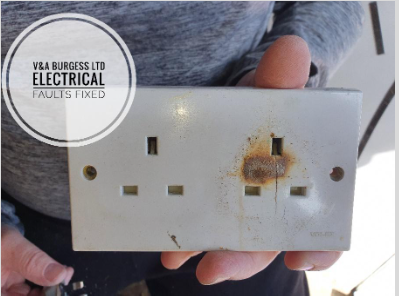
A burnt plug socket is normally caused by direct heat from a plug top or other source. In this case, the tumble dryer plug had melted resulting in significant burning to the plug socket face and the failure of this plug socket.
When these types of electrical problems occur, it's important to find out why. In this case, the electrical wiring in the tumble dryer plug could not be examined as the plug was a moulded and sealed type. The issue turned out to be a loose fuse holder in the plug top itself!
The repair for this type of situation would involve cutting of the old plug top and replacing it with a new, safely wired plug. The plug socket should then be replaced and connections checked to ensure there are no loose wires.
Back to top6) Loose Socket Wiring or Loose Plug Socket
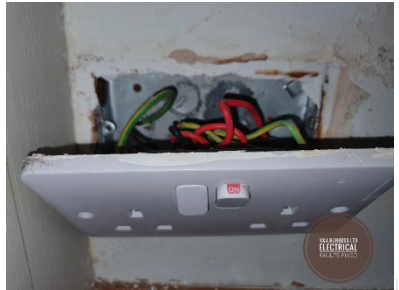
Loose wires cause fires. Where there are loose connections, this can be a cause of NO SOCKETS WORKING. When wiring becomes loose electrical current struggles to flow through the wires. The contact area of the metals is reduced resulting in higher electrical resistance and heat to be generated. This can be sufficient to cause total plug socket failure and melted or burnt wiring.
In some plug socket circuits, loose wires will NOT cause sockets to fail but there can then be dangerous hidden problems and risk of electrical fires.
Electrical experts agree that the electric system in a property should be tested and inspected every ten years for an owner-occupier property to check for electrical hazards and prevent dangerous situations from occurring.
If you suspect that you have loose socket wiring, you may also hear a plug socket crackling which is a potentially serious and dangerous situation. Both loose wiring and crackling plug sockets should be investigated by your local emergency electrician as soon as possible.
Back to top7) Damaged Plug Socket
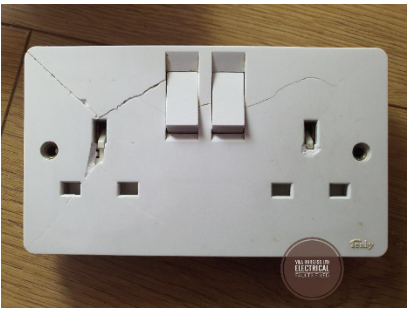
A damaged plug socket will often result in a dead outlet and potentially several of the other plug sockets in the property. Under certain circumstances, the damage may present an electrical shock risk, fire risk or failure of several other circuits may occur.
The plug socket in the picture is quite clearly damaged and should not have been in service at all. One further knock on a damaged plug socket can leave exposed live parts and cause further problems.
Electrical repair is not possible for socket outlets such as this. They are generally not a repairable item and must be replaced when damaged.
Back to top8) RCD or GFCI Tripped
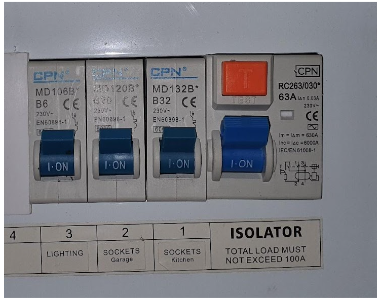
The RCD (Residual Current Device) or GFCI (Ground Fault Circuit Interrupter) is a life-saving device that protects against electrical shock. When this device trips, there is dangerous electrical current leaking away from the circuits. This device should not be reset continually as this will risk failure of the device and NO ELECTRIC SHOCK PROTECTION. There are certain circumstances under which this device will trip and whilst it may be a nuisance, the device is actually performing as intended and preventing injury or worse!
The RCD is also known in North America as the Ground Fault Circuit Interrupter. They two devices are all but identical in operation and the only significant difference is the name.
Back to top9) Faulty Plug Socket
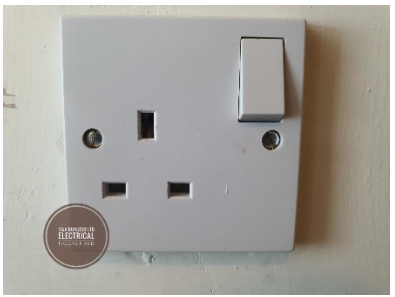
Sometimes a plug socket can simply ‘go faulty’. A rogue little chap, at times, will simply have a tantrum and fail to work.
When one plug socket goes faulty, it is likely that just that outlet will be affected. The wiring at the rear, the terminal connections and circuit wiring may all be just fine.
These types of electrical outlets have internal moving parts and as with anything that is manufactured from moving parts, things can go wrong. Parts can become coated in debris, dust or corrosion and can fail. Pieces of the mechanism can wear out and fail to make contact correctly resulting in the appearance of a failed outlet.
Where a double plug socket goes faulty, you may find that only one half of the double socket is working.
Back to top10) Cable Damage Somewhere
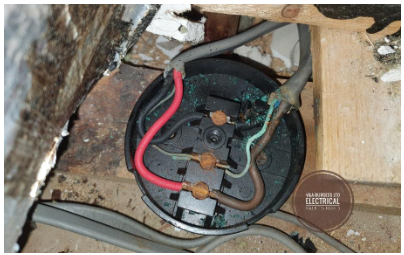
The flow of electricity requires that the consumer unit, wiring, and electrical accessories are in good working order. As the system deteriorates, old outlets can begin to fail gradually and cables can degrade.
Cable damage can be direct or a slow process which can often not be seen. Where cable damage occurs, the flow of electrical current around the circuit can be hindered. This may result in NO SOCKETS WORKING or perhaps just one apparently faulty outlet.
In many cases, the possible cause of cable damage can be unknown and electrical faults such as this may lay hidden in the attic, crawl space or floor voids. If you are having issues with your sockets not working it could be cable damage.
Have you carried out any home improvement or DIY tasks recently? Could there be cable damage in a wall from a newly installed shelf or cabinet causing the outlet problems?
Most cases of cable damage are accidental and only electricians will have the special equipment and test meters to check for the exact location of broken wire connections or faulty cables.
Back to top11) Circuit Breaker Faulty
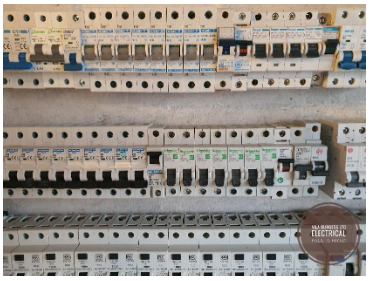
Where a tripped breaker has occurred, it may not always be as a direct result of electrical problems. Circuit breaker trips can be caused by an electric breaker aging, corroding, and going faulty.
Circuit breakers can become overly sensitive as the years pass and they begin to fail. This can result in circuit breakers tripping too soon when there is no danger present.
This can be a frustrating electrical fault for many homeowners. It may lead you to suspect a faulty appliance or outlet.
Homeowners have had a new outlet installed and new appliances delivered to only find out from an electrician that the circuit breaker was in fact, faulty.
These electrical devices are relatively inexpensive to supply and install so it is worth checking with your electrician if you have an electrical fault, failing appliances or just simply a circuit breaker that is on its way to the electrical scrap heap.
Back to top12) Summary
If you have NO SOCKETS WORKING there are some basic checks that you can carry out as discussed. We would always strongly recommend that beyond these checks, you have an electrician carry out any electrical work to ensure that compliance with safety regulations is met.
There are many reasons why one or several sockets would stop working and this article is not exhaustive but hopefully gives you some insight into what can go wrong or what may have gone wrong in your home.
Remember, electrical systems and plug sockets do not last forever. If your electric system or plug sockets are very old then they will need replacing to ensure that everything continues to work safely.
Back to topRead more articles
- Log in to post comments

